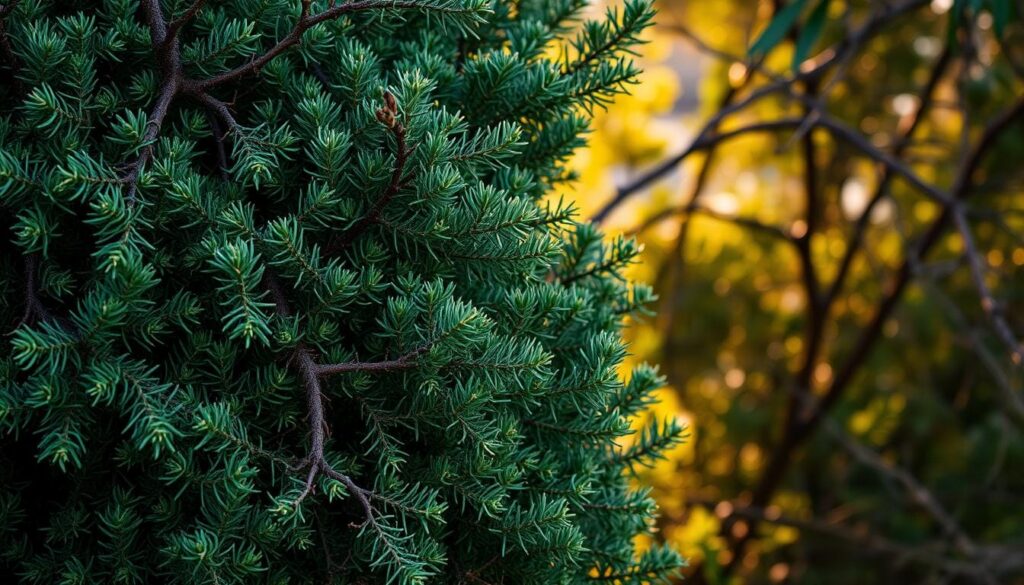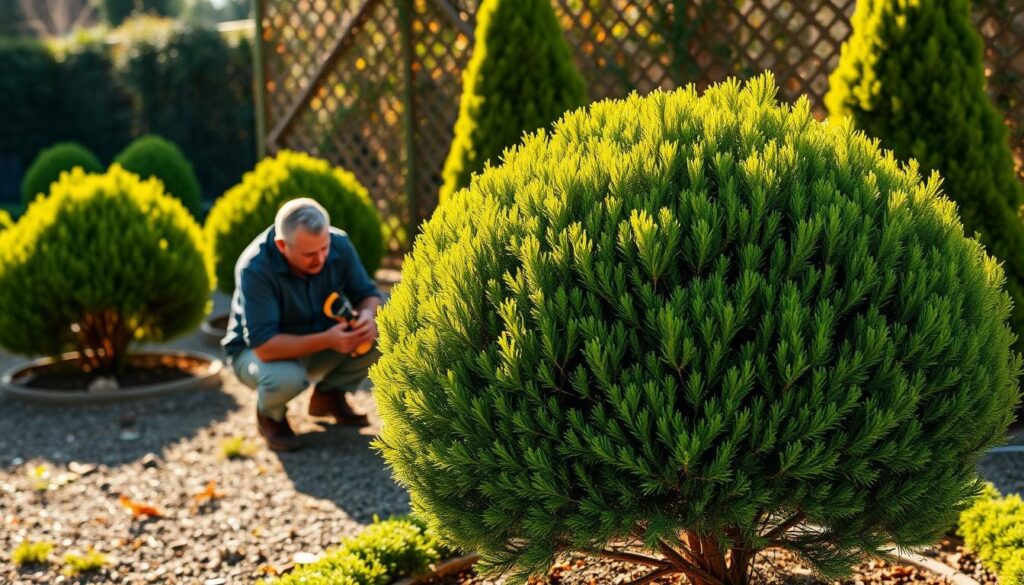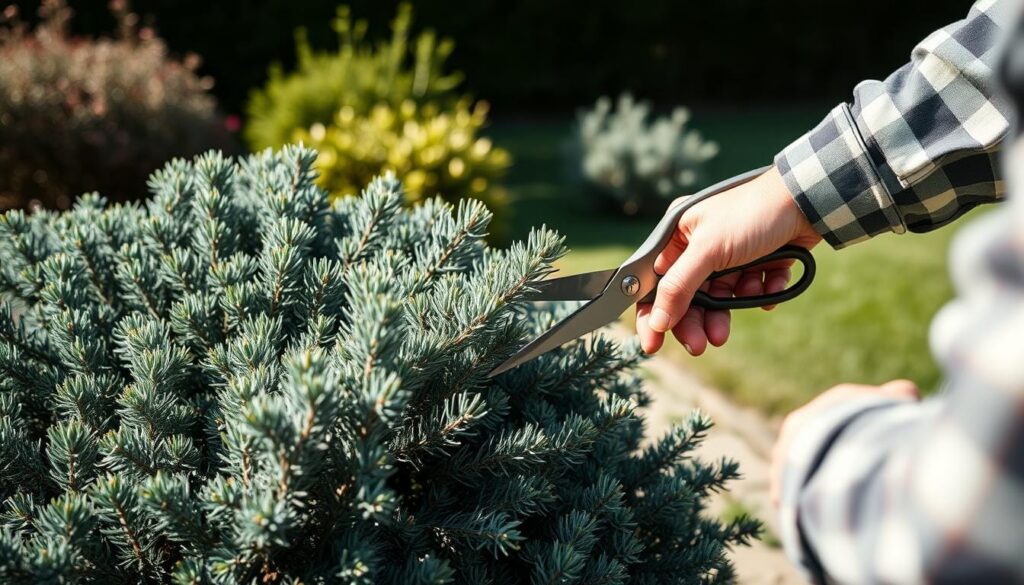Gardening enthusiasts understand the importance of maintaining the aesthetic appeal of their plants. Junipers, known for their evergreen beauty, require special care when it comes to pruning. Unlike other plants, junipers aren’t as forgiving when it comes to cutting back; doing it the wrong way can lead to unsightly bald spots and bare branches.
While junipers are generally low-maintenance, they do benefit from occasional pruning to maintain their health and appearance. Proper techniques are crucial to enhance their ornamental value in your landscape. This guide will walk you through the process, providing expert advice for both novice and experienced gardeners.
Key Takeaways
- Understand the unique growth patterns of junipers and how they impact pruning.
- Learn the best timing for pruning junipers to avoid damage.
- Discover proper pruning techniques to maintain the health and appearance of your junipers.
- Find out how to enhance the ornamental value of junipers in your landscape.
- Get expert tips on maintaining healthy, attractive juniper bushes.
Understanding Juniper Growth Patterns

The growth patterns of junipers are unlike many other garden shrubs, requiring special consideration. Junipers grow by producing new foliage at the tips of their branches, a characteristic that significantly influences pruning decisions.
Purpose and Goals of Pruning
The primary objectives of pruning junipers include encouraging healthier, bushier growth, removing dead or damaged wood, and shaping the plant to maintain its aesthetic appeal. It’s essential to understand that pruning junipers isn’t about reducing their size drastically but rather about maintaining their health and desired shape.
- Encouraging denser, healthier growth.
- Removing dead or diseased branches.
- Shaping the juniper to enhance its natural beauty.
The “Dead Zone” and Its Limitations
Juniper bushes naturally develop a “dead zone” towards their center as they mature. This area, devoid of foliage due to limited sunlight penetration, is a natural part of a juniper’s life cycle and not a sign of poor health. Pruning into this zone won’t stimulate new growth, making it crucial to understand its limitations when trimming.
Understanding these aspects of juniper growth is key to effective pruning. By recognizing the natural growth patterns and limitations, gardeners can make informed decisions that promote the health and appearance of their junipers.
Best Times for Trimming Juniper Bushes

Understanding the best time to trim juniper bushes is crucial for their health. Pruning at the right time ensures the plant remains vigorous and looks its best.
Optimal Seasons for Pruning
The ideal time for pruning junipers is in early spring or late winter. This period allows for pruning before new growth emerges, promoting healthier plants and better aesthetic results. Junipers can be pruned from April through September, but it’s advisable to avoid the hottest summer days.
When to Avoid Trimming
Avoid pruning junipers when temperatures are below freezing, as this can cause serious damage or kill the plant. Similarly, pruning in the fall can increase the risk of winter damage. It’s also wise to check with your local extension office for specific advice tailored to your regional climate, as the optimal pruning window may vary.
- Prune junipers in early spring or late winter for optimal results.
- Avoid pruning during freezing temperatures or in the fall.
- The way you prune is as important as when you prune.
Trimming Juniper Bushes: Proper Techniques

To maintain the health and aesthetic appeal of your juniper bushes, it’s crucial to understand the proper techniques for trimming them. Proper pruning is an art that requires the right tools and a step-by-step approach.
Essential Tools for Pruning
For effective pruning, you’ll need the right tools. Secateurs are ideal for small branches, while pruners are better suited for slightly larger ones. For bigger limbs, a saw is necessary. Ensuring your tools are sharp and clean is vital to prevent disease transmission and promote clean cuts.
Step-by-Step Pruning Process
When pruning, the size of the branch dictates the method. For small branches, simply snip them with secateurs, being careful not to cut beyond the branch collar. Larger branches require a three-step sawing process to avoid tearing the bark.
Handling Small Branches
For branches the diameter of a pencil or smaller, use secateurs. Cut just before the branch collar to avoid damaging the plant.
Removing Larger Branches
For larger branches, use a saw. First, make an undercut a few inches from the trunk. Then, cut from the top, meeting the undercut. Finally, remove the remaining stump, taking care not to cut past the branch collar.
| Branch Size | Tool to Use | Technique |
|---|---|---|
| Small (≤ pencil diameter) | Secateurs | Cut before branch collar |
| Medium | Pruners | Cut before branch collar |
| Large | Saw | Three-step sawing process |
Encouraging Bushier Growth
To encourage bushier growth, trim the young, green tips of branches with secateurs. Avoid shearing the entire plant, as this can create dead spots and shade the interior. New foliage emerges from the tips, so selectively trimming these areas promotes a fuller plant.
By following these techniques and using the right tools, you can keep your juniper bushes healthy and thriving.
Conclusion: Maintaining Healthy Junipers
To keep your juniper bushes thriving, it’s essential to grasp the fundamentals of pruning and its impact on the plant’s overall health.
Understanding juniper growth patterns and the limitations of pruning due to the “dead zone” is crucial. Avoid pruning the central trunk, or leader, as junipers with multiple leaders are weaker and more susceptible to damage.
Proper pruning practices, combined with complementary care such as proper watering and mulching, can prevent the need for major interventions. For specific advice, consult local extension offices or garden experts to ensure the longevity of your junipers.

